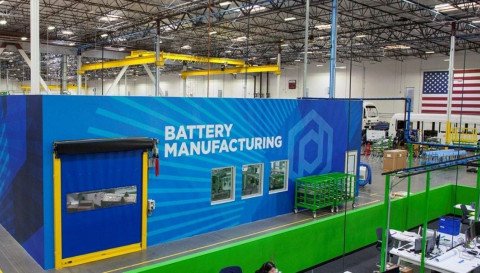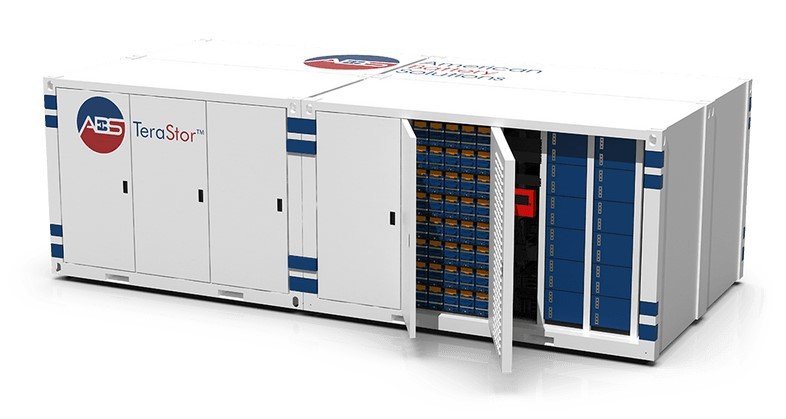ABS: Energy storage at distributed level have huge potential in India | Interview
In his exclusive interaction with ETN, C. Michael Hoff, Chief Technology Officer - ESS Division, American Battery Solutions (ABS) speaks to Dhiyanesh Ravichandran on the nature and potentials of the energy storage market in India, touching upon the relevance of his company's 'TeraStor' large-scale energy storage systems to the Indian market and beyond.
Excerpts:
Tell us your assessment of the energy storage (ES) market in India.
India is eager to move ahead with energy storage applications, especially for buffer storage, grid stabilization and reliability. However, there are certain roadblocks that are blocking the deployment of more ESS in the country. For instance, monetization of ES for those who wants to install remains problematic. Also on the policy side, there is lot of scope and need for standardization to make things easier for ES installations. Yet another block is the supply chain; the local sourcing of cells and its components, along with the required electronics, is at the nascent stage in India.
What type of ES applications have good prospects in the Indian market according to your assessment?
Industries and commercial entities have always been making their own microgrids for power generation to meet their own backup requirements. This has always been the trends and will continue, but with batteries and solar panels instead of traditional power generators. This segment of ES at the distributed level will remain as the biggest chunk of market in India.
What is American Battery Solutions' business strategy for the Indian market?
Given the lack of a vibrant supply chain in India, companies like ABS are interested in partnering with local entities to kick-start the ES market. We have come up with 'TeraStor' large-scale energy storage systems with 7.2 MWH of usable energy at rate of 2 hours of 2.6 MW. We will be following on with new products that are one-tenth of its size for smaller applications.
What 'TeraStor' can help is to build 'tera' energy storage economy. India may need terawatt hours' worth of energy storage to meet its future energy demands and sustainable integration and reliance of renewable energy. Our solutions allow customers to build the required storage infrastructure in quick span of time with bigger and modular systems that are easier to install and operate.
How supportive are Indian incentivization policies, taxation and excise duty frameworks for international energy storage companies like ABS to partner with local players and expand in the country?
The current scenario is extremely limiting for global companies to expand in Indian markets. If India has to develop technologies and products on its own, it may even take years or decades to reach the point where we are right now. To quickly build energy storage capacities, India has to enable global market players to contribute and ease out artificial barriers like tariffs. Although they are said to be in place to encourage local manufacturing, there are other ways available to support localization. Transportation of batteries from another continent is already expensive, worsened by counter-incentives in place for imports, thus offering no viable business case.
So, I would encourage a much reduced tariff, if not zero tariff, to allow companies to create the market to start with. Once the market is ready and products are brought in, Indian manufacturers will observe the know-how and catch up a lot faster. Good competition is always healthier than unfair competition, as the former improves everybody.
What has been the progress with respect to ABS' business strategy for the Indian market?
We have already established a software development process in India, designing some of our software meant for global products. We are also launching our hardware design facility in the country, to support the designing of power supplies, sub-systems within our products. Meanwhile, we are looking for partners to help us manufacture our products in India, excluding the battery cells.
Cells constitute a very large portion of the cost of the entire system, so if we aspire for a hundred percent Indian content in our products, we may have to wait until the cells are manufactured in India. It might not make economic sense for us to import cells and assemble products here, thanks to critical logistical and viability challenges involved. It would be better if we have local manufacturing of cells; we are already in talks with some players who are in the process, we may have to wait to see how successful they turn out to be in making cells that can be put into our products.
Hypothetically speaking, if the tariffs are in favorable conditions, will it be viable for companies like ABS to import fully-built products and price them competitively in India?
Yes. Given that the energy storage is not developed in India yet, the competition is limited. Our strategy is to sell our fully-built products in India if the customers are willing to pay the increased tariffs.
Apart from the US, which are the global regions and markets that ABS is bullish on?
The US is our primary market to start with. South America, Europe, and Asia are the other potential regions. Currently, we are importing the cells from Japan. Given that the US also has tariff issues, we want to diversify our manufacturing base to different regions across the globe.
As a company, we are very young and just getting started with the launch of our products by the end of this year. One of the decisive factor for us to determine our diversification of manufacturing would be the location of cell manufacturing. If the cells are manufactured locally in a country, then it is easy to make a decision to set up a manufacturing facility in that country.





















